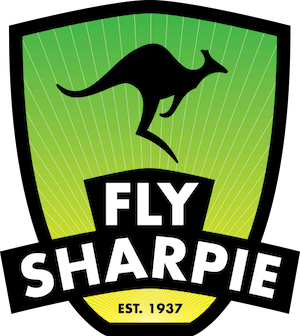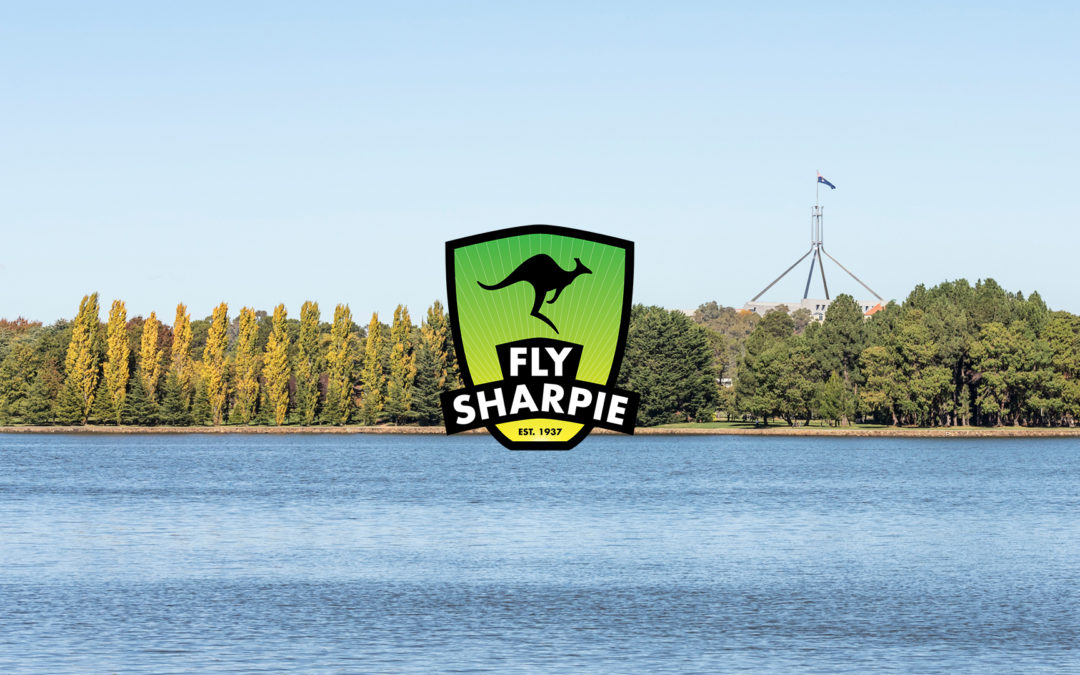THE LIZARD CAMPAIGN
BACKGROUND
Having not sailed seriously since the E22 Nationals in 1996, I was persuaded to do an Easter Sharpie Regatta in 2000. Having had a bit of dinghy fun again, I decided to look into another National.
THE CREW
I approached a few of my normal crew and a few stand ins, all of whom were unavailable / unsure or oversized. Over a few beers, I approached the tallest guy in the bar, who I believed had a reasonable amount of skill and experience. Dialogue over the next few months saw Ian Davidson conditionally contracted as the wireman, subject to him losing 15 kilos and proving he had ability (not only in football and drinking!)
The job was next to find a sheet hand. Cam Percival my logical choice, had decided to go cruiser racing, so after a few phone calls I knew Mark Lewis was keen, having sailed 470’s with me 25 or 30 years ago. This was subject to his losing 7 kilos and also proving he still had attitude and ability.
My target was to get the combined crew weight below 240kg, preferably with the crew losing all of the weight, because I believed I was fine how I was!
THE BOAT
Although it had a few leaks, the boat was still in good working condition, apart from a twisted centre case in the hull which was noticed by Rod Beurteaux (the mould has since been modified). I opted to put in a chute, on the advice of others, as the side tank chute has proven to be a bit of a bugger. We also added some more fibreglass to the top of our mast (Bethwaite glass top 2mm).
PRESEASON
We had a couple of sails prior to opening day with moderate success. The boat was set up similar to last Nationals, which I sailed in Melbourne (1993) using Brewer sails, the replica of One Designs. I had always believed these to be a safe option, especially for the moderate airs expected in Port Lincoln.
THE SEASON’S PREPARATION
My focus, given the limited lead up time for the Series, was to build crew skills and spirit and to obtain a good understanding of our boat. Our first four races saw three swims, with probably the most spectacular being a gybe outside the old Swan Brewery at the 14 foot dinghy club opening. The boat took several minutes to right! When eventually we were successful, it became very apparent that the top 2 feet of the mainsail had been stuck in the mud. A solid crew debriefing followed (driver error?). We also practiced bear away swims and all of the familiar Sharpie manoeuvres in the weeks to follow. What became apparent was that both Ian and Mark were unflappable in kicking back even harder. I, at this stage, decided that I probably needed to improve my fitness, as swimming was not one of my better, preferred sports.
The Lizard’s speed did however impress us when all was going well. We had some excellent races with Blatantly Obvious and Party Frock. I knew that we were nearing the competitive level, but the boat continued to lack height. In early November I opted for a “South Australian” rig as a back up, as I could see that the Bethwaite/Brewer combination may have lacked a little power for Port Lincoln, owing 90% to the soft top mast.
I put a Proctor Epsilon mast up and a set of KA Sails. We persevered with this rig and did a bit of mix and matching. Following a couple of State Heats, off shore at Busselton, I had concluded to pursue the Proctor mast. We did a bit of after work sailing off Woodman’s Point prior to the Nationals. In stiff sea breezes our boat handling fitness and confidence improved.
Whilst I documented all of our rigs and adjustments I concluded that nothing had really changed with Sharpies over the last 10 years. Rakes, sails and set ups are all similar. I persisted with a deck strut as it was on the boat and a similar device to chocks on an E22. The lowers were moved mid ship to consistently control side bend.
THE SERIES
It was apparent that any of 10 or so boats could win the Title. Our approach was similar to all. Good start, top 10 at the top mark and chip away from there. Our boat speed was competitive, especially when the breeze was over 15 knots, which was not often enough. We struggled at 8 knots, but we could hang in there-just! Whilst we had two rigs, we generally settled on the Proctor mast, the KA main, a Brewer jib and a Walker kite. I was quite happy with the Brewer main and the KA jib, but we had good results early with the initial combination. We probably should have used the KA jib more on the lighter days.
In the 96 boat fleet, our strategy was basically to fleet sail and to forget about boat speed having pre race tune ups. We also tried to stay out of individual boat on boat racing, generally looking for clean air and freedom to tack.
Being lead boat after Heat 3, all three crew members could not believe our position, as we were of the opinion we had not sailed consistently. All good things come to an end, 17th in Heat 4, being caught on the wrong side up the first beat in a Port Lincoln raffle. This was the only race in which greed got the better of us, as in all other heats, we worked generally the middle up the first beat.
Down to the final heat, it was a 3 – 4 boat series with Vipers, Smoke, Blur and ourselves, providing numerous complicated win scenarios. We concluded that we needed to beat the close opposition with a few boats in between Vipers. We had our race plan which we stayed to, seeing Vipers was back, loosely covering Smoke up the first work. Whilst the race closed up to probably 20 seconds mid race, we backed our judgment and managed to re establish a minute and a half gap by the top mark.
SUMMARY
The slim Ian Davidson and Mark Lewis came through with the goods. The boys accepted the challenge and put in 100%. We had a huge re learning curve with our confidence, communication and boat handling skills, continuing to improve throughout the Series.
Most importantly; win, lose or draw, we all had fun. When the going was tough the boys still managed to throw down a few Flaming Lamborghinis!

